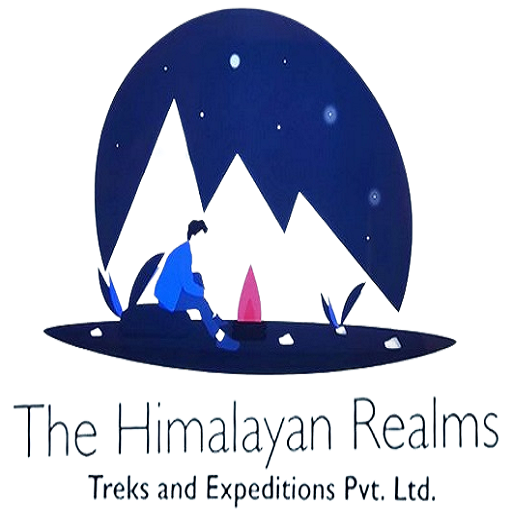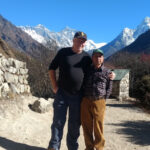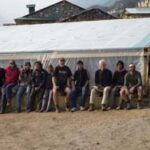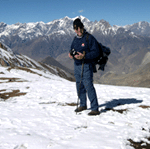Overviews: Gai Jatra Festival
Nepal is a land rich in cultural heritage, traditions, and festivals. Among its many vibrant celebrations, Gai Jatra holds a unique place. Often described as the festival of cows and laughter, Gai Jatra is more than just a day of festivities—it is a deeply meaningful event that reflects Nepalese beliefs about life, death, and the journey of the soul. This blog post explores the origins, significance, rituals, and modern-day celebrations of Gai Jatra, painting a vivid picture of why this festival remains one of Nepal’s most fascinating cultural events.
Origins and Historical Background
Gai Jatra, which translates to “Cow Festival,” is traditionally celebrated in the Kathmandu Valley by the Newar community, especially in the cities of Kathmandu, Bhaktapur, and Lalitpur. The festival falls on the first day of the dark fortnight of the month of Bhadra in the Nepalese lunar calendar, usually corresponding to August or September in the Gregorian calendar.
The roots of Gai Jatra are closely tied to the historical period of King Pratap Malla, a powerful 17th-century ruler of Kathmandu. According to legend, the king’s young son tragically died, plunging the royal family into deep mourning. Observing the grief overwhelming the kingdom, the king sought a way to comfort his people and help them cope with their losses.
The solution was to celebrate the departed souls by parading cows through the streets. In Hindu belief, the cow is considered sacred and a guide for the souls of the deceased to reach the afterlife. Thus, by honoring cows, the festival symbolically helps lost souls find peace. Over time, Gai Jatra evolved from a solemn remembrance to a joyful, satirical, and colorful event that blends humor, social commentary, and religious devotion.
Spiritual and Cultural Significance
At its core, Gai Jatra is a festival dedicated to remembering loved ones who have passed away during the previous year. It serves as a form of collective mourning and healing for families and communities. But beyond mourning, the festival emphasizes celebration and laughter as tools for overcoming grief.
In Nepalese culture, death is not viewed as an end but as a transition. Gai Jatra represents the belief that the souls of the dead travel to the afterlife with the help of the cow. The festival encourages families to commemorate the dead with joy, knowing their souls are on a journey toward liberation.
Another important aspect is the social role of humor and satire during the festival. Gai Jatra is famous for its street performances, parades, and theatrical acts that poke fun at social and political issues. This makes it a platform for people to express criticism and satire openly, often through jokes, songs, and puppet shows. The humor acts as a release valve for social tensions and a reminder not to take life too seriously.
Key Rituals and Customs
The Cow Processions:
One of the most iconic parts of Gai Jatra is the procession of cows—or children dressed as cows—through the streets. Traditionally, families who lost a member in the previous year participate by leading a cow or a child dressed as a cow. The children are often adorned with colorful decorations, horns, and painted faces.
In Kathmandu, the procession typically starts early in the morning and weaves through various parts of the city. The cows symbolize the guide for the deceased souls, and the procession is a visual expression of sending blessings and prayers for their peaceful journey.
- The Satire and Comedy
As the day progresses, people gather in public squares and streets to watch or participate in satirical plays, puppet shows, and street performances. These performances target everything from political corruption to social injustices, all cloaked in humor. Traditional Newar performers called Lakhey dancers also entertain crowds with their elaborate costumes and dances.
This tradition of public satire is a vital element of Gai Jatra, reinforcing the festival’s role in social commentary and community bonding.
- Offering Food and Prayers
Families also make offerings to the gods and deceased ancestors. Special foods and sweets are prepared and shared among relatives and neighbors. The offerings are meant to appease the spirits and ensure the well-being of the departed souls.
At the same time, community members visit temples and shrines to pray for the dead, seeking blessings and protection.
- Mourning and Celebration Intertwined
What makes Gai Jatra unique is the blending of mourning with celebration. While the festival honors the dead, the atmosphere is far from somber. Instead, laughter, music, and dance fill the streets, reinforcing the message that life continues and joy can be found even in loss.
Gai Jatra in Different Parts of Nepal
While Gai Jatra is most famously celebrated in Kathmandu Valley, different communities have their own unique ways of observing the festival.
Kathmandu: The capital city’s celebrations are marked by grand processions, public satire, and cultural performances. The procession winds through the old city streets, passing temples and courtyards.
Bhaktapur: Here, the festival is celebrated with equally colorful processions but also emphasizes the Newar cultural heritage through traditional songs and dances.
Lalitpur (Patan): In Lalitpur, the festival has a strong religious flavor, with temple rituals combined with festive parades.
In rural parts of Nepal, Gai Jatra might be observed more quietly, focusing on family remembrance and prayer, but the core meaning remains the same.
Gai Jatra Today: Tradition Meets Modernity
In recent years, Gai Jatra has attracted attention beyond the Newar community and Kathmandu Valley. Tourists and cultural enthusiasts from around the world come to witness the spectacle of cow processions, colorful costumes, and lively performances.
Modern celebrations have also incorporated new forms of expression—such as contemporary street theater and social media satire—while maintaining the traditional essence of the festival.
However, urbanization and changing lifestyles pose challenges to preserving the full authenticity of Gai Jatra. Some aspects, like the involvement of children and family participation, have diminished in certain areas. Nevertheless, efforts by cultural organizations and local communities aim to keep the spirit of Gai Jatra alive through festivals, workshops, and awareness programs.
Why Gai Jatra Matters: Lessons from the Festival
Gai Jatra holds valuable lessons that resonate universally:
Embracing Loss with Laughter: The festival teaches that grief can be acknowledged without being overwhelming. Laughter and joy can coexist with mourning, offering emotional relief and healing.
Celebrating Life and Death: By honoring ancestors and the deceased, Gai Jatra reminds us to cherish the cycle of life and death as natural and sacred.
Social Commentary through Humor: The use of satire shows how humor can be a powerful tool for truth-telling and social change.
Community and Togetherness: The collective participation strengthens bonds and creates shared meaning around universal experiences.
How to Experience Gai Jatra
If you’re planning to visit Nepal during Gai Jatra, here are some tips to make the most of your experience:
Plan Your Visit in Kathmandu Valley: The cities of Kathmandu, Bhaktapur, and Lalitpur offer the most vibrant celebrations.
Arrive Early: Processions start early in the morning. Being there from the start lets you soak in the atmosphere and witness the decorated cows and children.
Respect Traditions: Remember that Gai Jatra is a solemn occasion for many families. Be respectful during processions and rituals.
Join the Festivities: Watch the street performances and engage with local people. The festival is a wonderful opportunity to learn about Nepalese culture firsthand.
Capture Memories Responsibly: Photography is welcome, but always ask permission, especially when photographing children or religious rituals.
Conclusion
Gai Jatra is much more than a festival about cows or a mere cultural spectacle. It embodies the Nepalese way of coping with loss, blending reverence with humor, and tradition with social reflection. The festival reminds us all that death is part of life’s journey and that laughter can be a healing force amid sorrow.
As Nepal continues to evolve, Gai Jatra remains a timeless celebration that connects the past with the present, the living with the dead, and individuals with their communities. Whether you are a traveler seeking cultural insight or someone interested in the human experience of grief and joy, Gai Jatra offers a profound and colorful window into the heart of Nepal.









